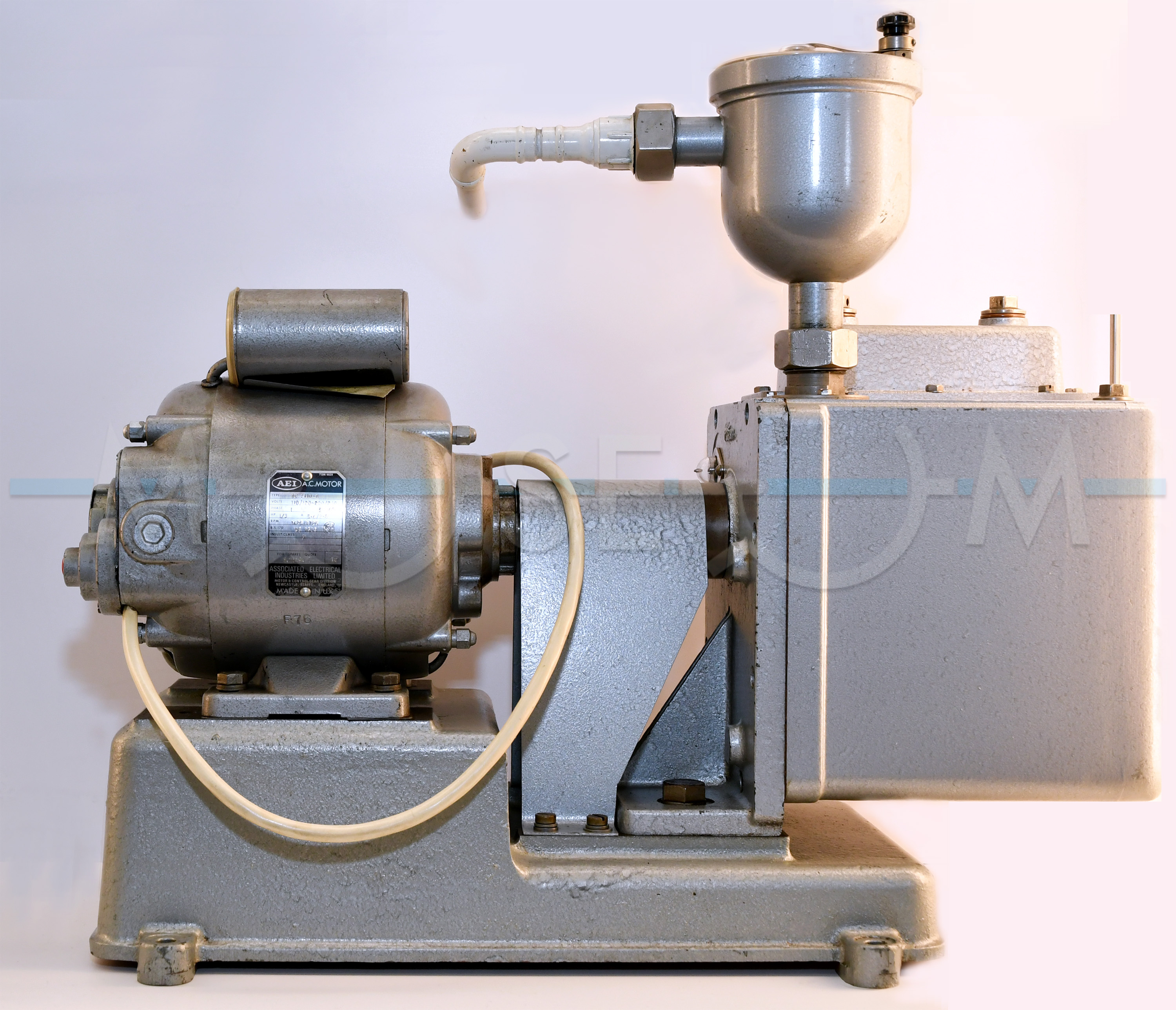Categories of exhibits
Rotary vane pump GDR1
Exhibit no. 270
Mass spectrometers require a vacuum to avoid signal losses from collisions and reactions with residual gas and to prevent electrical arcing. Depending on the design of mass spectrometers, various levels of vacuum quality are required. Foreline pumps (also called backing or roughing pumps) are used to create a "rough vacuum", above 10−3 Torr (0.1 Pa).
They often serve as a first stage towards achieving high or ultra-high vacuum. A rotary vane pump is an oil-sealed pump, which consists of vanes mounted to a rotor that rotates inside a cavity. As the pump rotor turns, inlet gas is trapped between the rotor and vane segments. Compressed gas is discharged from the pump through an exhaust port. Rotary vane pump was invented by a Canadian engineer Charles C. Barnes in 1874.
The exhibit is a two-stage rotary vane pump GDR1 from Metrovac, which operated in the MS902 double-focusing mass spectrometer manufactured by AEI Scientific Apparatus Ltd. in 1969. It has an internal reduction gearing connected by a direct drive from an electric motor having a nominal speed of 1425 rpm. The pumping speed and ultimate pressure were 1.1 L/s (4 m3/h) and 5x10-4 torr, respectively, and the pump contained 2.2 L of oil. There were three pumps of this type in the MS902 spectrometer. The weight of the unit is 44.5 kg.





